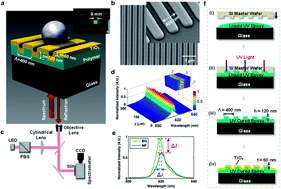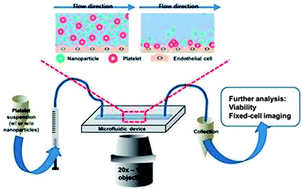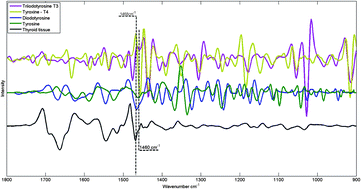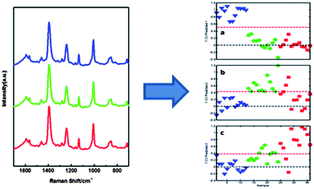Take a look at our new HOT articles just published in Analyst and free for you for the next couple of weeks:
Chemometric determination of lipidic parameters in serum using ATR measurements of dry films of solvent extracts
David Perez-Guaita, Angel Sanchez-Illana, Josep Ventura-Gayete, Salvador Garrigues and Miguel de la Guardia
Analyst, 2014,139, 170-178
DOI: 10.1039/C3AN01057K, Paper
Infrared imaging in breast cancer: automated tissue component recognition and spectral characterization of breast cancer cells as well as the tumor microenvironment
Audrey Benard, Christine Desmedt, Margarita Smolina, Philippe Szternfeld, Magali Verdonck, Ghizlane Rouas, Naima Kheddoumi, Françoise Rothé, Denis Larsimont, Christos Sotiriou and Erik Goormaghtigh
Analyst, 2014, Advance Article
DOI: 10.1039/C3AN01454A, Paper
SEDFIT–MSTAR: molecular weight and molecular weight distribution analysis of polymers by sedimentation equilibrium in the ultracentrifuge
Peter Schuck, Richard B. Gillis, Tabot M. D. Besong, Fahad Almutairi, Gary G. Adams, Arthur J. Rowe and Stephen E. Harding
Analyst, 2014,139, 79-92
DOI: 10.1039/C3AN01507F, Paper
Structured illumination for tomographic X-ray diffraction imaging
Joel A. Greenberg, Mehadi Hassan, Kalyani Krishnamurthy and David Brady
Analyst, 2014,139, 709-713
DOI: 10.1039/C3AN01641B, Communication
Molecular interactions of nanomaterials and organisms: defining biomarkers for toxicity and high-throughput screening using traditional and next-generation sequencing approaches
Rebecca Klaper, Devrah Arndt, Jared Bozich and Gustavo Dominguez
Analyst, 2014, Advance Article
DOI: 10.1039/C3AN01644G, Critical Review
Conformational and mechanical changes of DNA upon transcription factor binding detected by a QCM and transmission line model
Jorge de-Carvalho, Rogério M. M. Rodrigues, Brigitte Tomé, Sílvia F. Henriques, Nuno P. Mira, Isabel Sá-Correia and Guilherme N. M. Ferreira
Analyst, 2014, Advance Article
DOI: 10.1039/C3AN01682J, Paper
Real-time evaluation of aggregation using confocal imaging and image analysis tools
Zahra Hamrang, Egor Zindy, David Clarke and Alain Pluen
Analyst, 2014,139, 564-568
DOI: 10.1039/C3AN01693E, Communication
Enhancing the sensitivity of potential step voltammetry using chemometric resolution
Jiarun Tu, Wensheng Cai and Xueguang Shao
Analyst, 2014, Advance Article
DOI: 10.1039/C3AN01719B, Paper
Amplified plasmonic detection of DNA hybridization using doxorubicin-capped gold particles
Jolanda Spadavecchia, Ramesh Perumal, Alexandre Barras, Joel Lyskawa, Patrice Woisel, William Laure, Claire-Marie Pradier, Rabah Boukherroub and Sabine Szunerits
Analyst, 2014,139, 157-164
DOI: 10.1039/C3AN01794J, Paper
Quantitative dielectrophoretic tracking for characterization and separation of persistent subpopulations of Cryptosporidium parvum
Yi-Hsuan Su, Mikiyas Tsegaye, Walter Varhue, Kuo-Tang Liao, Lydia S. Abebe, James A. Smith, Richard L. Guerrant and Nathan S. Swami
Analyst, 2014,139, 66-73
DOI: 10.1039/C3AN01810E, Paper
A dual-plate ITO–ITO generator–collector microtrench sensor: surface activation, spatial separation and suppression of irreversible oxygen and ascorbate interference
Mohammad A. Hasnat, Andrew J. Gross, Sara E. C. Dale, Edward O. Barnes, Richard G. Compton and Frank Marken
Analyst, 2014,139, 569-575
DOI: 10.1039/C3AN01826A, Communication
















